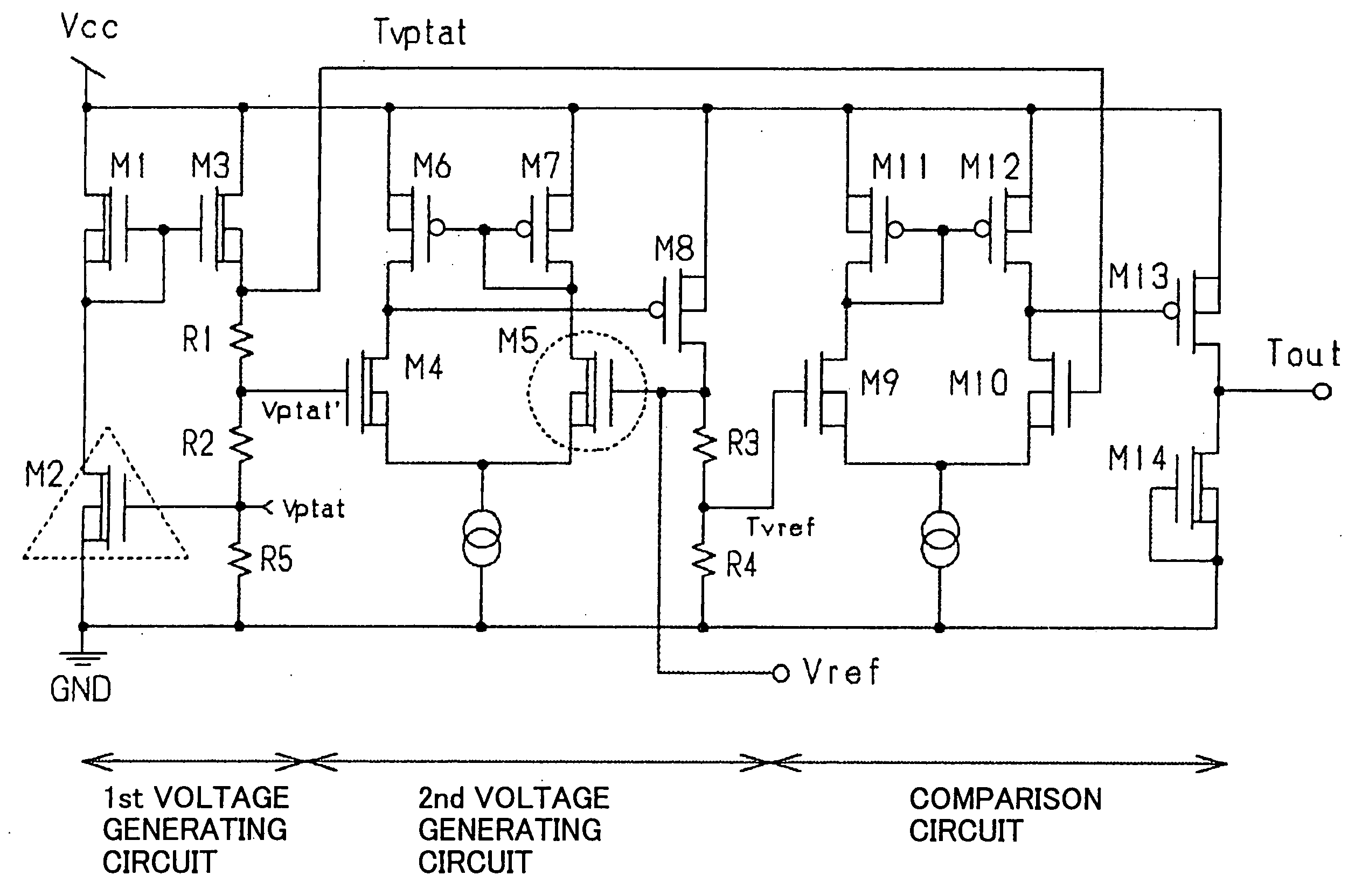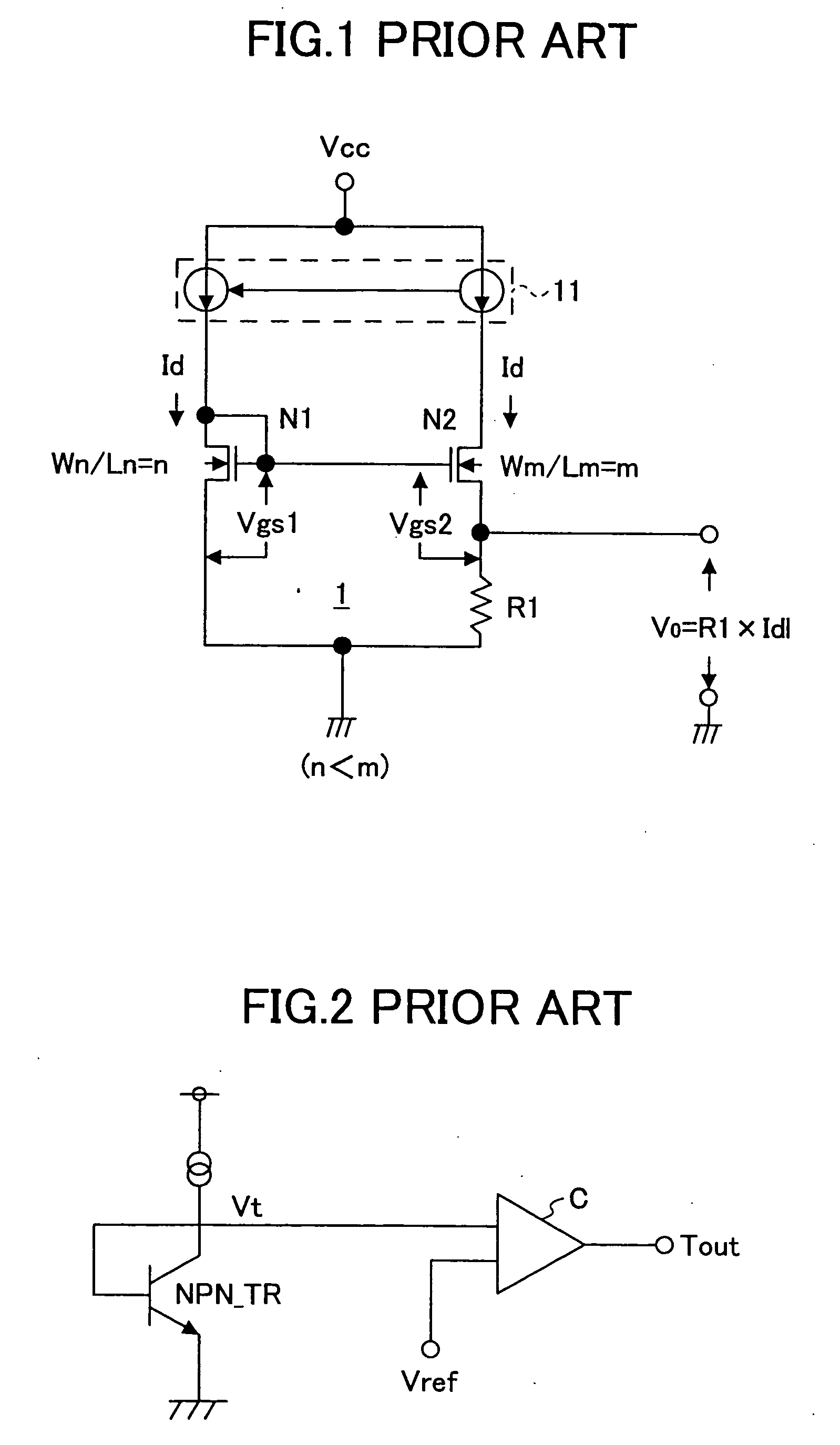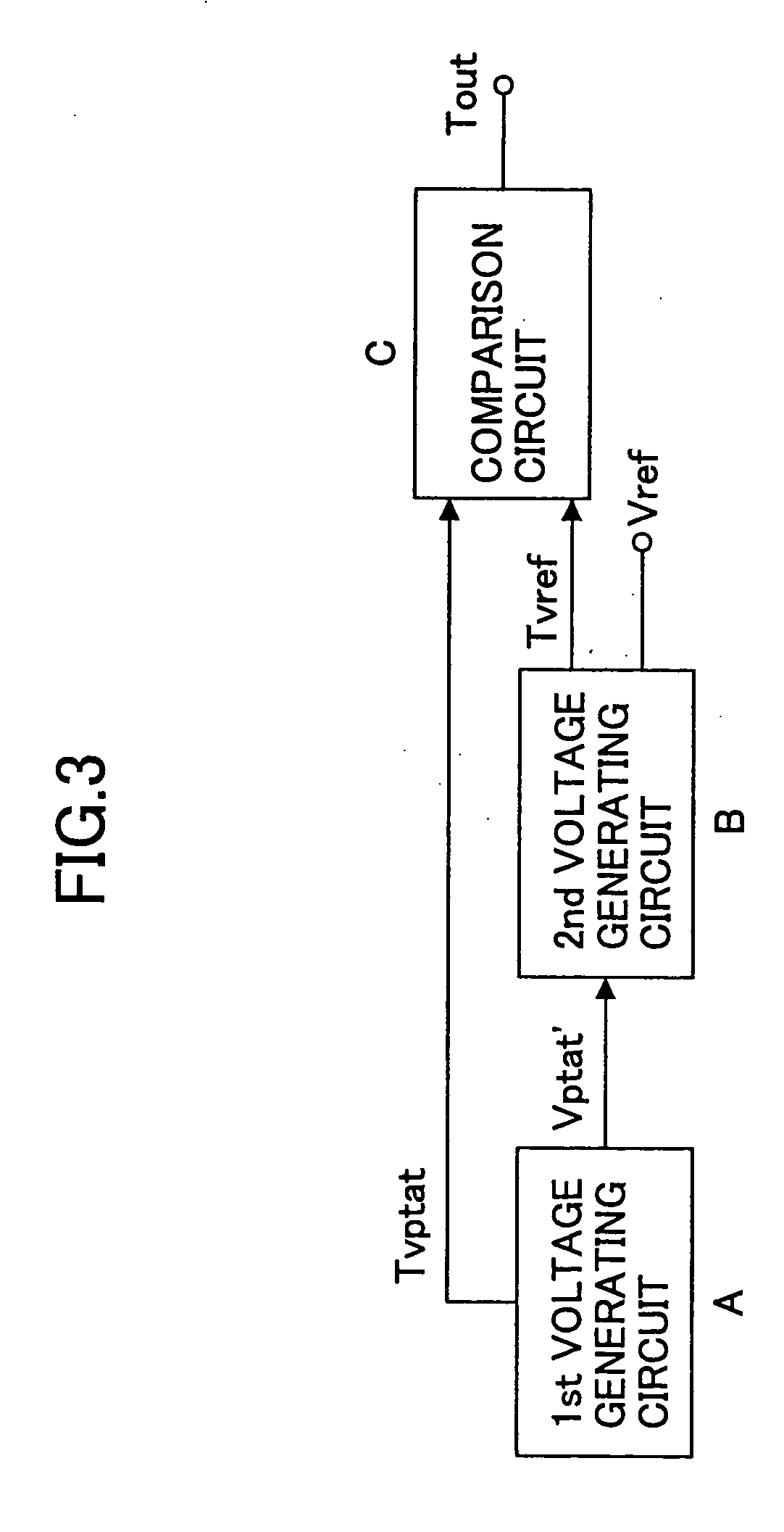Temperature sensor
a temperature sensor and sensor technology, applied in the field of temperature sensors, can solve the problems of inability to guarantee the accuracy of the ptap voltage, the loss the destruction of the semiconductor integrated circuit, so as to achieve the effect of improving the sensitivity and low-voltage operation
- Summary
- Abstract
- Description
- Claims
- Application Information
AI Technical Summary
Benefits of technology
Problems solved by technology
Method used
Image
Examples
first embodiment
[0057]FIG. 3 is a block diagram of the temperature sensor according to the first embodiment of the invention. The temperature sensor comprises a first voltage generating circuit A, a second voltage generating circuit B, and a comparison circuit C. The first voltage source A outputs a PTAT voltage (referred to as “Tvptat” in the first embodiment), which has a positive temperature coefficient in proportion to the absolute temperature, as well as a voltage Vptat′, which also has a positive temperature coefficient and is obtained from Tvptat through a voltage-divider. Tvptat is supplied to the comparison circuit for the comparison with the reference voltage. On the other hand, Vptat′ is supplied to the second voltage generating circuit for obtaining a reference voltage.
[0058] The second voltage generating circuit B generates a voltage having a negative temperature coefficient, and adds this voltage to Vptat′ supplied from the first voltage generating circuit A to output a first referen...
second embodiment
[0103]FIG. 12 is a block diagram of the temperature sensor according to the second embodiment. The temperature sensor comprises a first voltage generating circuit, a second voltage generating circuit, a subtraction circuit, and a comparison circuit. In the second embodiment, the output of the subtraction circuit is compared with the reference voltage. This arrangement is capable of reducing the operating voltage, while maintaining high sensitivity.
[0104] The first voltage generating circuit generates a voltage Svptat in proportion to the absolute temperature. Svptat has either a positive or negative temperature coefficient. This Svptat is supplied to the subtraction circuit. The second voltage generating circuit generates a first reference voltage Vref, a second reference voltage Tvref, and a third reference voltage Svref, none of which has a temperature coefficient. While the second reference voltage Tvref is supplied to the comparison circuit, the third reference voltage Svref is...
third embodiment
[0148]FIG. 17 is a block diagram of the temperature sensor according to the third embodiment of the invention. The temperature sensor comprises a first voltage generating circuit, a second voltage generating circuit, a subtraction circuit, and a comparison circuit, as in the second embodiment. In the third embodiment, a voltage Vptat′ is output from the first voltage generating circuit, and supplied to the second voltage generating circuit. This Vptat′ is used in the second generating voltage circuit to produce a reference voltage.
[0149] The first voltage generating circuit also outputs Svptat, in adiition to Vptat′. The Svptat and Vptat′ are produced from a PTAT voltage (not shown in FIG. 17) originally generated in the first voltage generating circuit in proportion to the absolute temperature, through voltage conversion at predetermined ratios using a voltage divider. In the second embodiment, the PTAT voltage, Svptat, and Vptat′ have positive temperature coefficients.
[0150] The...
PUM
| Property | Measurement | Unit |
|---|---|---|
| temperature | aaaaa | aaaaa |
| temperature | aaaaa | aaaaa |
| voltage | aaaaa | aaaaa |
Abstract
Description
Claims
Application Information
 Login to View More
Login to View More - R&D
- Intellectual Property
- Life Sciences
- Materials
- Tech Scout
- Unparalleled Data Quality
- Higher Quality Content
- 60% Fewer Hallucinations
Browse by: Latest US Patents, China's latest patents, Technical Efficacy Thesaurus, Application Domain, Technology Topic, Popular Technical Reports.
© 2025 PatSnap. All rights reserved.Legal|Privacy policy|Modern Slavery Act Transparency Statement|Sitemap|About US| Contact US: help@patsnap.com



